
In recent years I've banged on that big art is dead (and dead dull). That over the top giant canvas thing feels really dated and overblown and all about the money. How 2007.
Edward Lucie-Smith is curating a show at Charlie Smith that is all about small art. He's written a surprisingly good text for the press release about the idea (though I'm not sure I'm going to like the small artists he's showing, but no one's perfect).
Polemically Small Curated by Edward Lucie-Smith
Oct 8-30 @
Charlie Smith London"What’s the polemic? Why small? This exhibition, of small, sometimes very small, works of contemporary art is essentially a rant about the outmoded rhetoric of size that is still embraced by what likes to call itself the avant-garde. New cutting-edge artists have been painting small now for some time. It’s happening here in London; it’s happening in Germany, still the real centre for avant-garde activity in Europe; it is happening among a certain number of Italian artists. It may be happening elsewhere as well. The interest in small-scale art is inevitably starting to spread to other genres – sculpture, photography and video.
Huge art, in Modernist terms, was essentially an invention of America in the 1940s. Very big Abstract Expressionist paintings were the “barbaric yawp” (to quote Walt Whitman) that proclaimed the new cultural dominance of the United States. Before that the important Modernist painters had only occasionally painted on a very big scale, to suit a special occasion. Picasso’s Guernica is a good example.
Big abstract paintings made themselves at home in the lofts of South-of-Houston-Street New York, then being colonized by artists. These originally industrial spaces seemed to offer plenty of wall. Love it, live with it, if necessary trash it. New art, though big, was still cheap. Later, with the multiplication of new museums in America and elsewhere, big paintings seemed to have a logical purpose. Admiring critics wrote pieces about the way in which these overweening canvases offered a new experience in wraparound vision. Inevitably, however, the space available soon started to run out. How many Pollocks, de Koonings and Rothkos does it take to fill a vast gallery space to the point of bursting? Too many painters were producing big canvases, with the result that a lot of contemporary art, even art safely in the possession of museums, now spends most of its time in store. Where ambitious private collectors are concerned, we have become used to the term ‘warehouse art’. The proud possessors are known to own it. It’s also known that they don’t live with most of it. In a real sense, art that isn’t being looked at doesn’t exist. Warehouse art is non-art. An awful lot of ambitious but misguided artists are still producing it.
If we look at the art of the past, art earlier than Modernism, we find a mixture of big art and small art. The big art was almost invariably produced for absolutely specific purposes – never on spec. It adorned churches and palaces. It offered a focal point to a public square. Small scale art was sometimes produced without a patron in mind, simply for the market, as most art is produced today. Many of the great masterpieces of the past are disconcertingly small. Portraits by Van Eyck and Memling. Religious paintings by Antonello da Messina. Some, though not all, of Rembrandt’s self-portraits. Samuel Palmer’s landscapes of the Shoreham period. Even the Mona Lisa. They need to be looked at in a different way from wraparound art – slower, more contemplative – dare one say it? – more loving.
Today many young artists are forced, through economic necessity, to work in very small spaces. Collectors, even when prosperous, don’t have unlimited wall space. How many wraparound canvases can you house in a two-bedroom flat? There is an obvious disjuncture between what is being made and its supposed destination. An art market that produces solely for museums and warehouses surely isn’t in a healthy condition.
This exhibition is meant to do two rather ambitious things within a physically small space. First, to suggest that contemporary art is changing, and changing rather faster than usual. An important part of this change is the rebellion against huge size. Artists are making small work not because they are forced to (though in some cases that is increasingly true), but because they actually want to – because small art, in current conditions, is actually cutting edge, and delivers a new and dissident message. “Look at me in a different way,” it says. Secondly, linked to this, the show invites visitors to explore, on their own terms, how this different way of looking functions, and what it may possibly deliver."
Edward Lucie-Smith
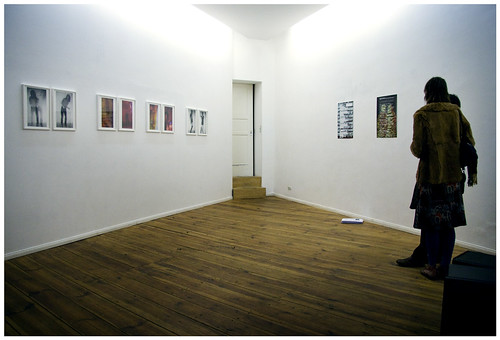
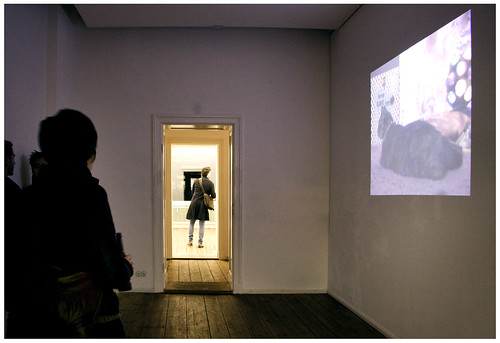

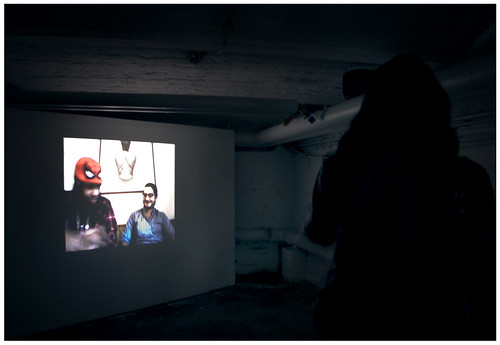
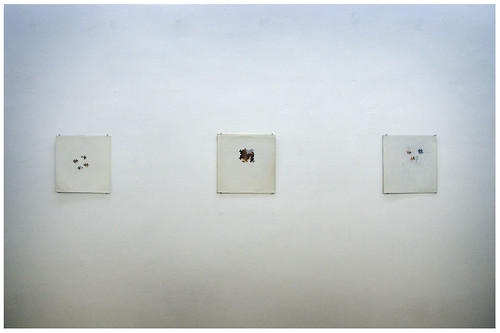
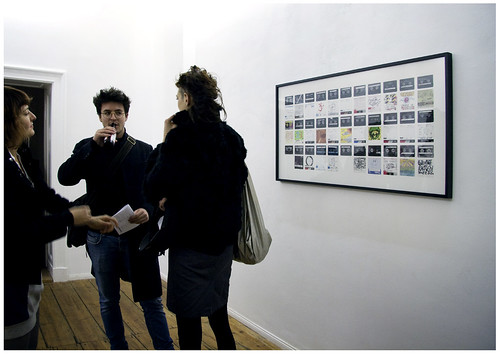
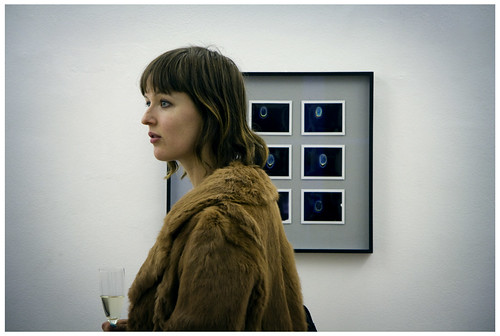





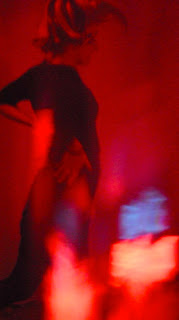.jpg)



